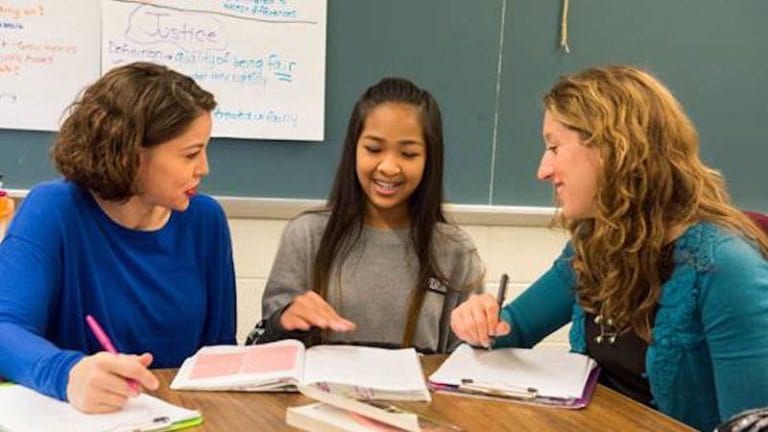When you walk through a school with great community school enrichment programs, you can find students playing chess, strumming guitars, and laughing in an improv theater group—all under the instruction of parents and community members. When students participate in community school programming, they show impressive gains in areas of academics, social and emotional development, prevention of risky behaviors, and health and wellness. School leaders, Parent Teacher Organizations (PTO), and community stakeholders have a unique opportunity to work together to provide community school programming, allowing the school to become a hub for student enrichment at any grade level. Want to try community school enrichment programs at your school? Follow these simple steps:
1. Create community partnerships.
School leaders and PTOs can work together to organize programming. The PTO can reach out to parents and community members to find instructors. Seek out the hidden talents, hobbies, or skills of parents and community members. Can someone teach students to knit or bake? Maybe a parent teaches Zumba, works part-time as a travel writer, or speaks another language. Does anyone scrapbook, woodwork, or make their own jewelry? Think outside the box when finding instructors. Classes are meant to enrich a student’s school day, not replicate it. Instructors need not be experts in the field, just willing to share their talents.
2. Market school enrichment programs.
Market, or brand, your school enrichment programs from the start. You might have to start small with one after-school enrichment activity, but you’ll want to be prepared for a bigger program. Make courses work for your schedule and school plan. They can be offered once a month, quarter, or semester, or they can take place anywhere from one to five days per week. Create a digital or physical handbook that gives instructor bios and course information. Detail costs and possible scholarship opportunities. Consider encouraging interested staff or parents to participate alongside students to show that we are all lifelong learners.
3. Keep things organized by registering students.
Registering students can be as simple as requesting pen and paper sign-ins. But, consider going the digital route to facilitate larger programming options. Use one of the ever-growing number of simple online booking sites, like Bookwhen. The more organized you make this kind of programming, the better your chances are of making it a lasting part of your school culture.
4. Address potential money and legal issues—before they become issues.
Screen all adults working with children. Additionally, tax-exempt PTO organizations should make sure to work in accordance with state tax laws if they are charging students a fee for classes or paying instructors on a contract basis. PTOs can charge for courses at set prices, sliding scales, or offer scholarships. While such programming can provide important funds, don’t that forget the goal is to provide all students with enrichment opportunities.
5. Celebrate learning.
Community school enrichment programming is ultimately about growth and connection. Make sure to use the learning opportunities as a chance for the school community to celebrate. Consider putting on showcases where students share their talents or display their work in the halls. Be sure to invite the local media to cover a story about the experience. In the end, school leaders get to relish in the fact that their school is a hub for learning, both during and beyond the school day.
Join our Facebook group Principal Life for more conversation about and insights into the challenges of school leadership.

